For decades, Stegosaurus was( and still is) the most famous of all the Stegosaurid family, its the first one that people know when asked to name one from this fascinating group. Over the last decade, some of it’s relatives started to gain some fame, species like Kentrosaurus has become a regular fixture in art as well as in the toy model world as well as pop culture. Today, this rich diversity of Stegosaurs have reached the toy figure market in an unprecedented way that we now have good representation of other species especially those that were found in China as well as Africa. Today we will take a look at Hesperosaurus, a Stegosaur that lived in North America during the early Jurassic.

I have to be honest that prior to acquiring this model I wasn’t even aware of this dinosaur. The model we are reviewing today is a special one as it is not from any of the popular or mainstream brands, or even a mass produced model. This Hesperosaurus model is by Dinosaur Toy Forum’s very own Brolyss4 also known as maquetas_y_modelos on Instagram. The artist, Cesar Gomez, is based in Mexico and have shown some of his models on the forum, this is his latest one and one that really caught my eyes. Before we look at the model, a few things about this Stegosaur first.

Hesperosaurus (meaning “western lizard) hails from the famous Jurassic Morrison Formation in North America. It comes from a much lower Kimmeridgian epoch and is the oldest known Stegosaur from the Americas. First discovered in 1985, the type specimen was only officially named Hesperosaurus mjosi in 2001 and there are several relatively complete skeletons known which gives a pretty good idea of what the animal may have looked like.

Superficially, it and Stegosaurus may look very similar. The most obvious way to distinguish the two is by their plates, more specifically the shape of it. The iconic Stegosaurus has plates on its back that are tall and has a more pointed tip giving it that diamond-like shape. On Hesperosaurus, these plates are not as tall and wider with a more rounded look to them. Both have the same four spikes or “thagomized” at the end of their tail. Besides the shape and size of the plates, there is also a slight difference in the the skull with Hesperosaurus’s perhaps deeper.
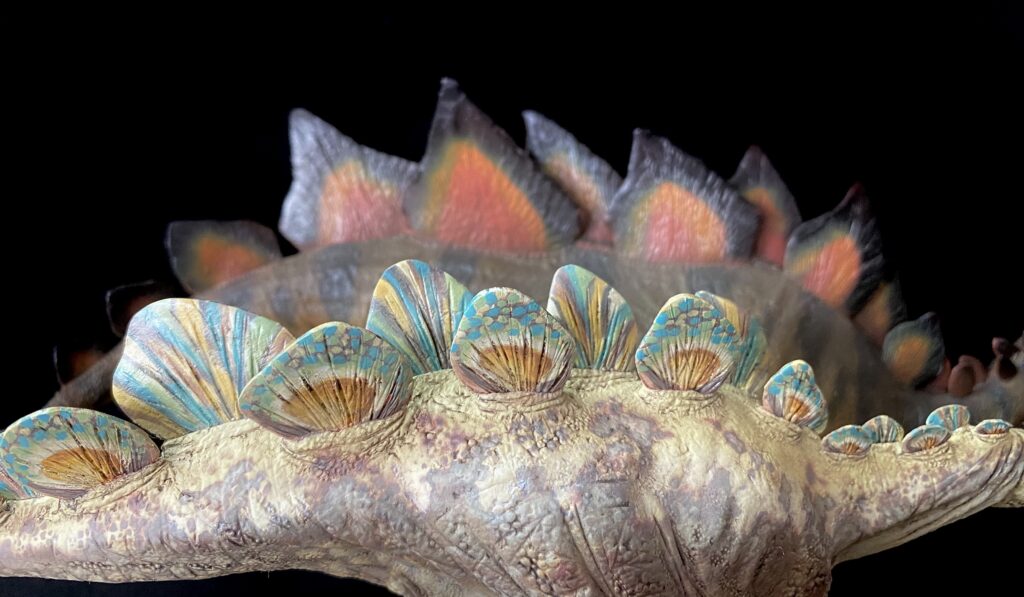
For a long time the validity of Hesperosaurus was debated; many believed it was the same animal as Stegosaurus. In the end, Hesperosaurus held its own and is considered a valid genus proving that Stegosaurus had relatives that roamed around the Morrison Formation during the Jurassic. They may or may not have overlapped, but they did face the same enemies like Allosaurus and Ceratosaurus. It could also be that they, despite looking similar, may have occupied different ecological niche or lived in different environment thus avoided direct competition with each other.
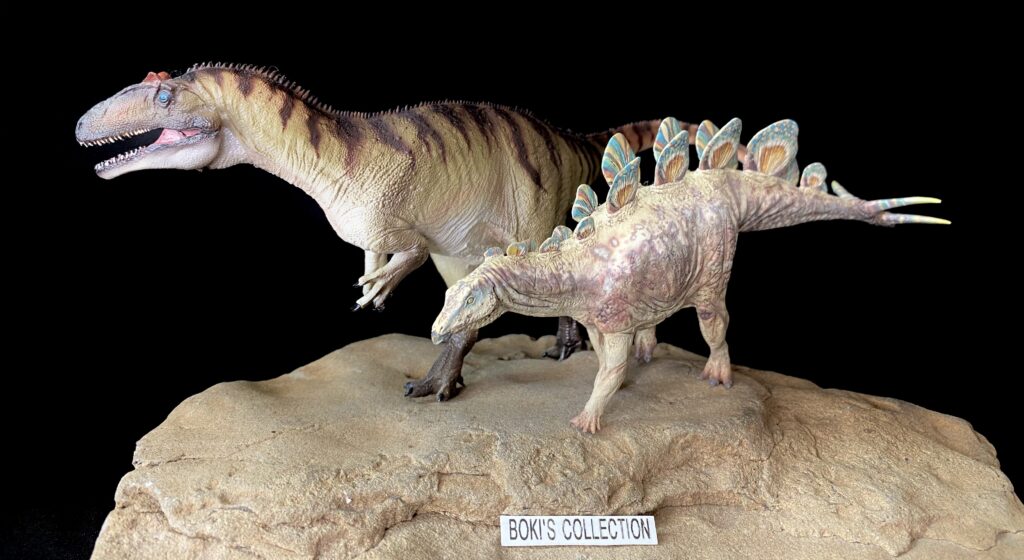
The physical similarities between Hesperosaurus and Stegosaurus as well as being found in the same location could lead one to believe that they are very closely related to each other. With improved science and more in depth study would reveal that despite their similarities, Hesperosaurus is actually much more closely related to Dacentrurus, a genus of stegosaur from Europe, far away from the famed Morrison Formation.
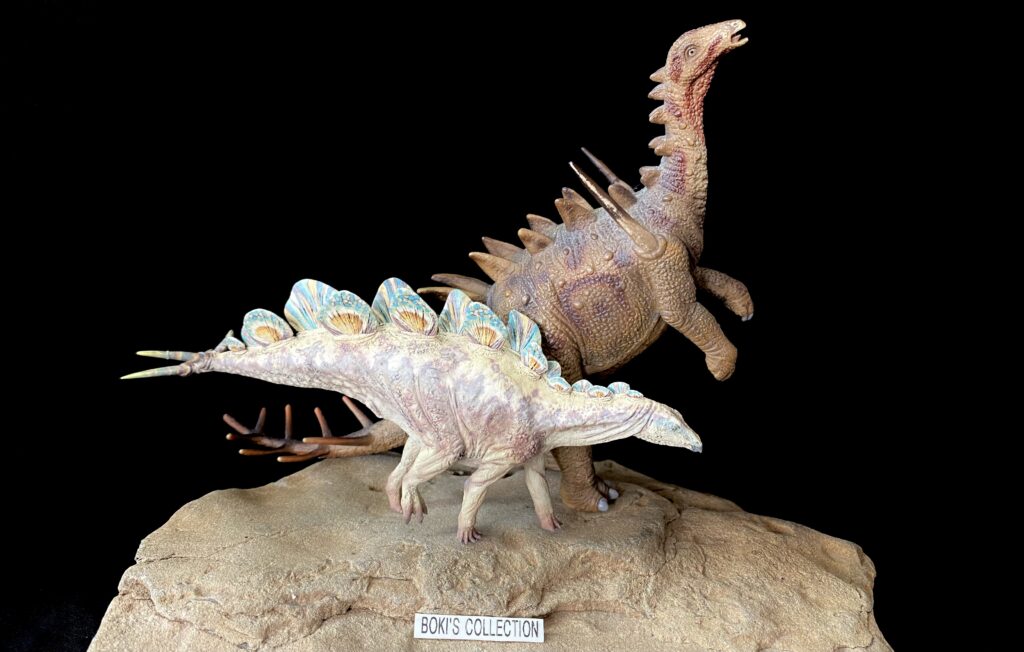
As far as I know, there isn’t a toy figure of this animal, at least not from any of the major brands we have today. So,this makes this model a special one. Hesperosaurus was a medium size animal, smaller than Stegosaurus with an estimated size range of around 16′ to 21′ feet in length. The model is done in the popular 1:35 scale measuring 7.5″ inches long and 3.5 inches tall. This scale makes it a good fit with many of models from today’s popular brands like PNSO.


The model is resin, meaning it is fragile and could easily break if not handled carefully. The model comes in two parts: almost all of the body done in one part, and the last inch of the tail makes the second separate part. Unlike most model kits that comes in many parts, this two-part set make it easy to assemble using only super glue. This only applies to the unpainted version which is the cheapest costing $40. The artist also offers the model fully assembled and painted for $80 and there is an option to add on a small diorama base for another $30. Overall, its a reasonable price.


Although I’m happy with my painting skills, I decided to get the whole assembled and fully painted version. I consider this piece more of an art piece than a model, plus I wanted to see for my self the quality of the paint work which captivated me when I first saw photos. I did not get the base since the cost would have pushed it beyond my budget (but worth it if you can afford it) and I’m short on display space for a base. It is also worth mentioning that the artist also accepts commission on paint job and I have seen different versions of this model in different colors and designs.
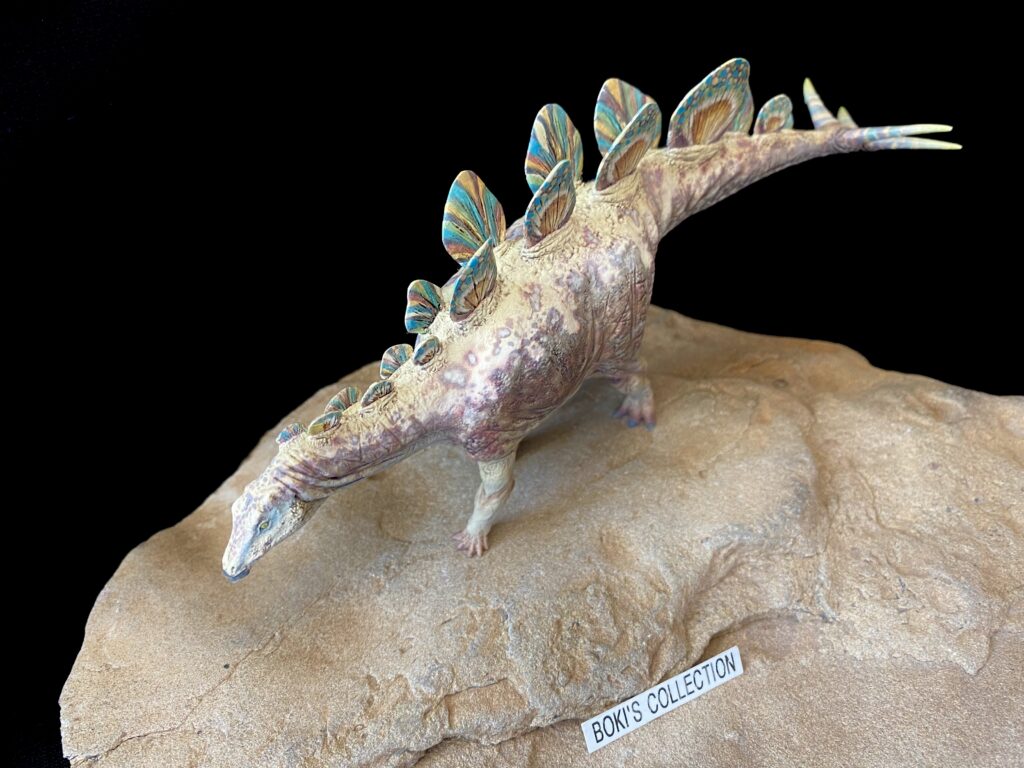
Besides being a unique and unrepresented species in my collection, what really attracted me to this model was the whole color and design that I saw on his post. The colors were unlike anything I have seen before and I was curious to see it in person.
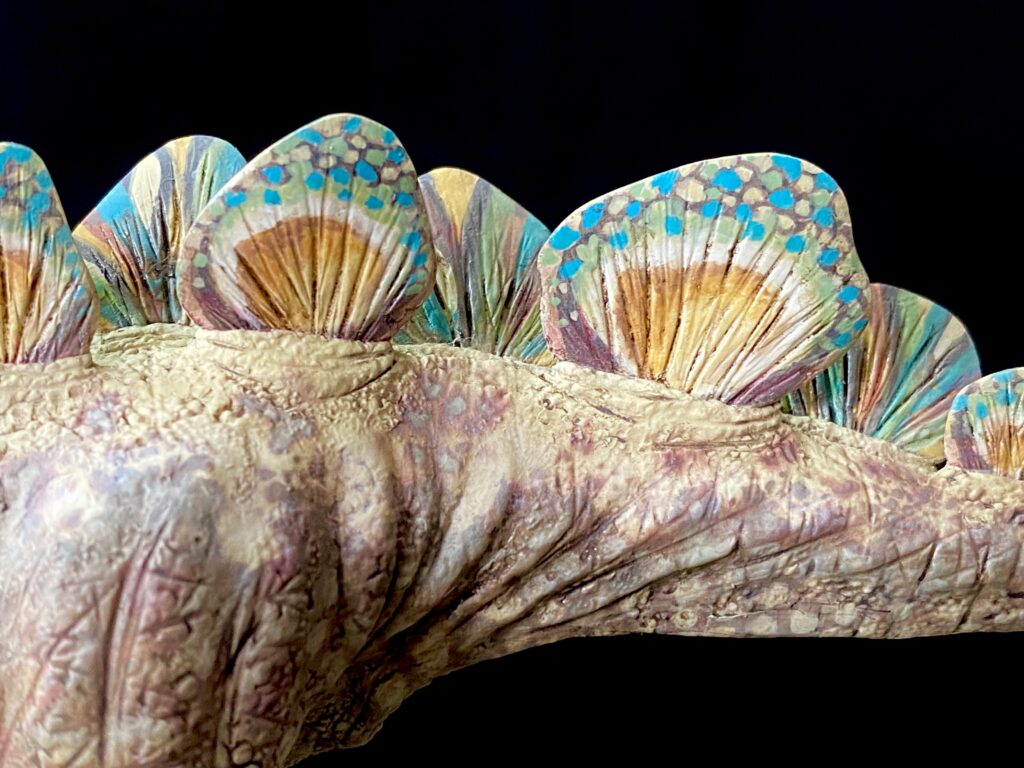
So, after saving up some money, I contacted the artist and arrange to purchase the painted version. It arrived fairly quickly, however and despite the careful packing, the tail broke along with one of the spikes. The box was obviously hit on one side. Luckily the break was clean and was easily fixed and the break line not obvious. When I saw the model it did not disappoint!
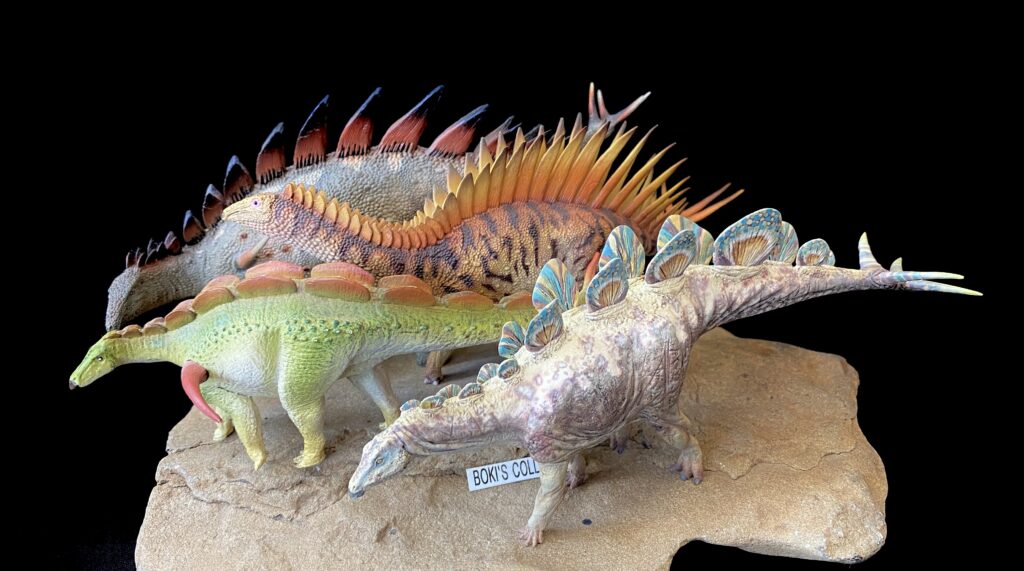
The model is packed with lots of details that rivals those from major brand figures. There are– back plates arranged in alternating rows. These plates have lots of groves that adds texture to it and at the base of each plates you see some skin folds bunched up. The plates show the wider and more rounder shape that set it apart from Stegosaurus. At the base of the tail you see the four spikes or “thagomizer” which are oriented more facing backwards away from the body, a position better suited for stabbing an enemy; in fact there is a damaged vertebra from an Allosaurus that is attributed coming from a thagomized blow.

The head is nicely sculpted and show plenty of details such as scales and skin wrinkles. On the neck you will see good musculature as well as big scales covering the throat area, and loose skin hanging all adding and giving a sense of weigh. The eyes are small and painted cleanly in yellow.

We have become used to seeing Stegosaurus sporting green and brown colors, it’s become the standard colors used for this group, this one however is unique and very eye-catching. The color palette is complex and can only be described as earth tones but really is hard to describe. The entire base color for the body appear to be a blend of olive green over beige from head to the tips of the tail. Nearing the center of the body a off-white watermark band creates a border between the beige and a darker brown color that dominates the lower half of the body, the throat, and the underside of the tail. Mixed in with this brown is a very subtle purple that really add dimension and depth.
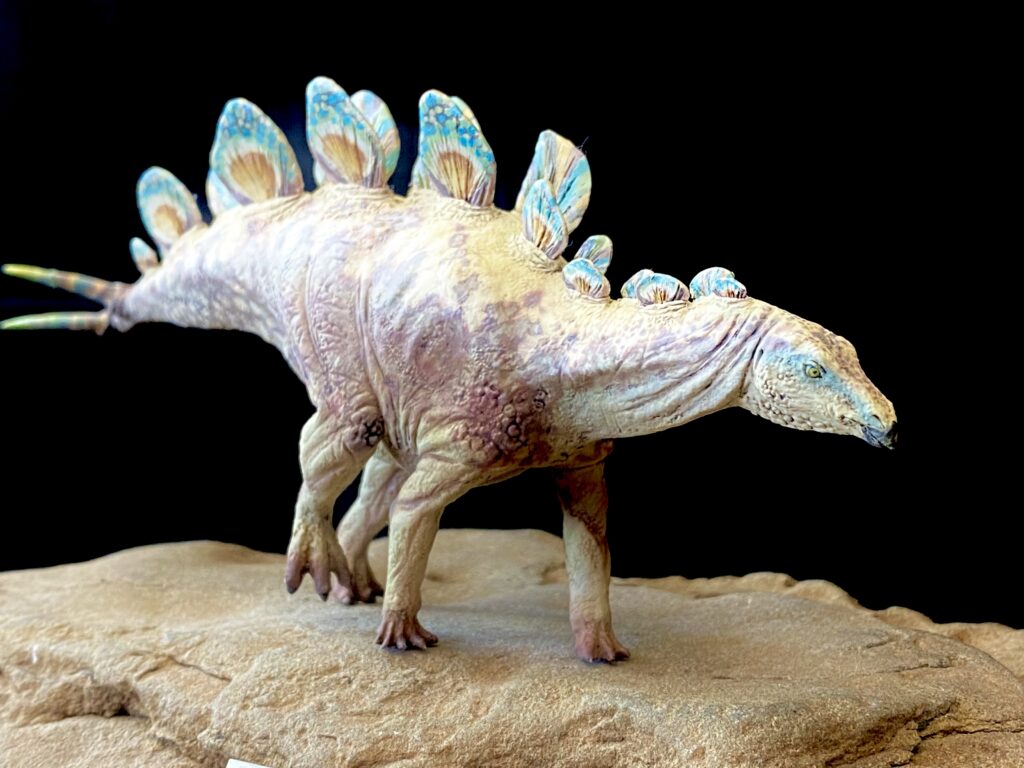
Within this dark brown band you will see a speckling and swirls of lighter colors such as white, yellow, and green that all creates a very pleasing and natural looking patters that I can only describe as watercolor effect. And scattered all over the body are spots of various size, shape, and colors that really brings the entire color palette together in a cohesive way!
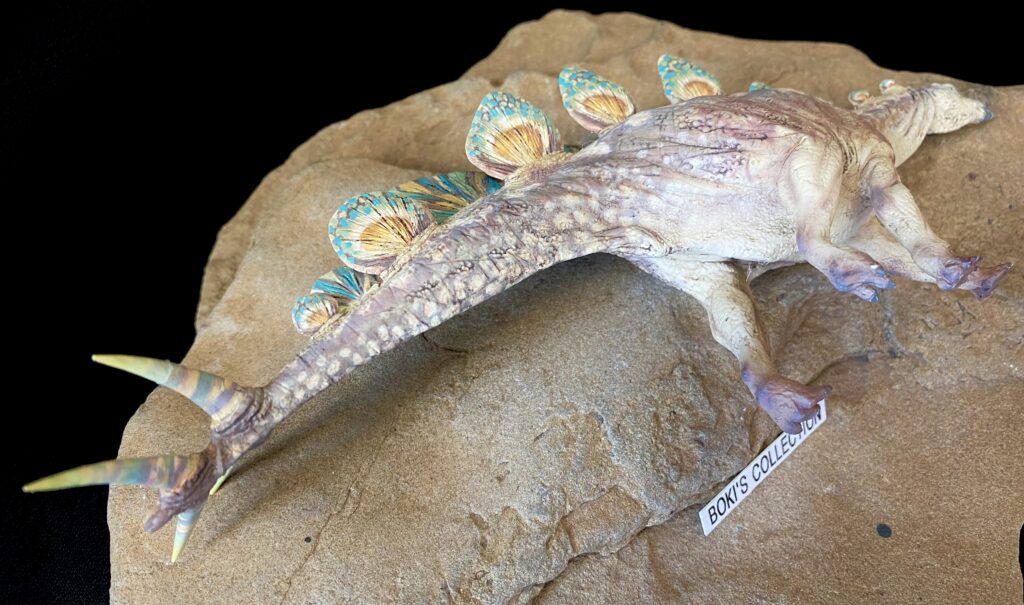
The plates on the back is an explosion of colors that at first could need some adjustment. We often see Stegosaurus plates given the same red/orange/yellow color combination so it is really refreshing to see something very different and unique. Starting at the base, we see a fan-like brown shape, it is then followed and bordered by a white outline that slowly fades and give way to spots! These spots are roughly the same size but different colors. Here we see the robin egg blue color spots dominate; in the mixed are tan and yellowish spots that contrast nicely with each other. A dark brown is used on the space between these spots which contrast nicely with the lighter colors and make them really stand out. To top it all off, a purple hue is used on the lower edges of the plates.

On the inner side of the plates, the same colors are used except the the spots are now replaced by squiggly lines of various width radiating from the base. It’s a very color scheme and design that works very well. The famous thagomizer spikes also sports the same colors as the plates but in a much subtle tone and now instead of spots or vertical lines, we instead see these colors forming bands starting at the base of the spikes and slowly fades as it reaches the tips. The overall color choice of using pastel hues is daring and goes beyond what we expect, couple that with the beautiful execution of the paint application, you have a model that is so delicate looking and unique.
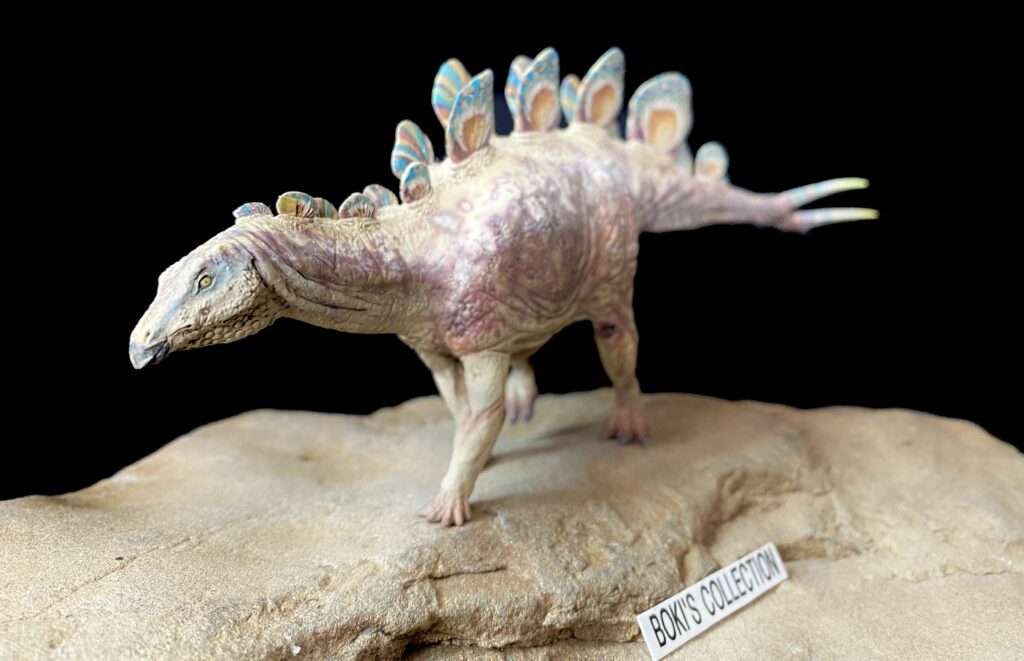
The pose is more or less neutral with the head straight forward and the tail held out with very little curve to it. It is the legs that we see some sense of movement. The figure is in the act of leisurely walking with one front leg forward, two backwards, and the right hind leg held up as if the animal is about to take a step. It’s a nice pose to have one leg up as it truly convey a sense of action especially when the model is placed on diorama base.
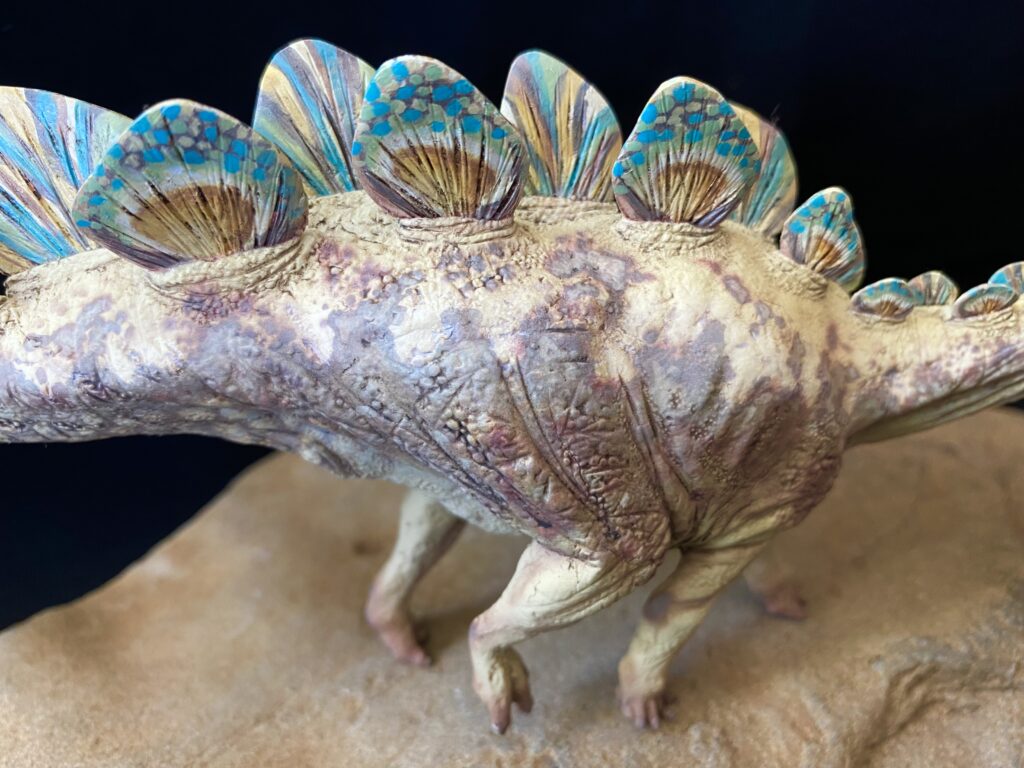
If you are looking for something beyond your typical PVC model to spice up your collection, I highly recommend this figure. Not only is it produced by a talented artist, he is also a member of the DTF, one of the latest throughout the years. Not only was I captivated by this model, I was also very impressed by the dedication of one individual to produce a models all on his own from design, molding, assembling, and painting. It is truly one man-production that is worth supporting.
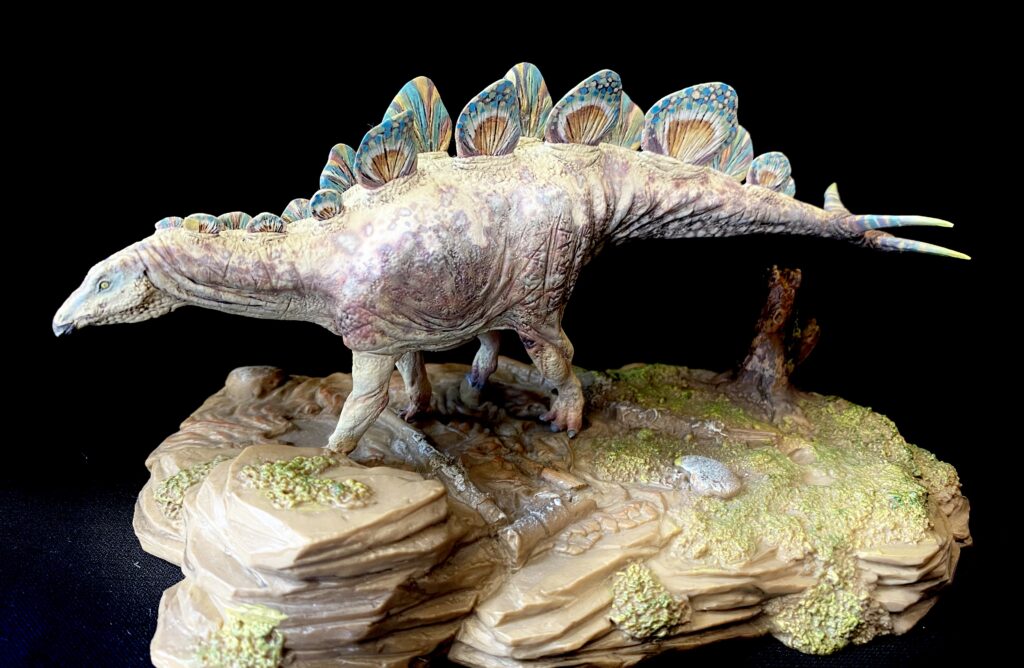
One of the pleasures of being a member on the forum is that you get to know some talented individuals and have the pleasure of watching them grow as an artist. If you are lucky enough to purchase some of their works, they not only add to your collection, but also add some sentimental meaning.
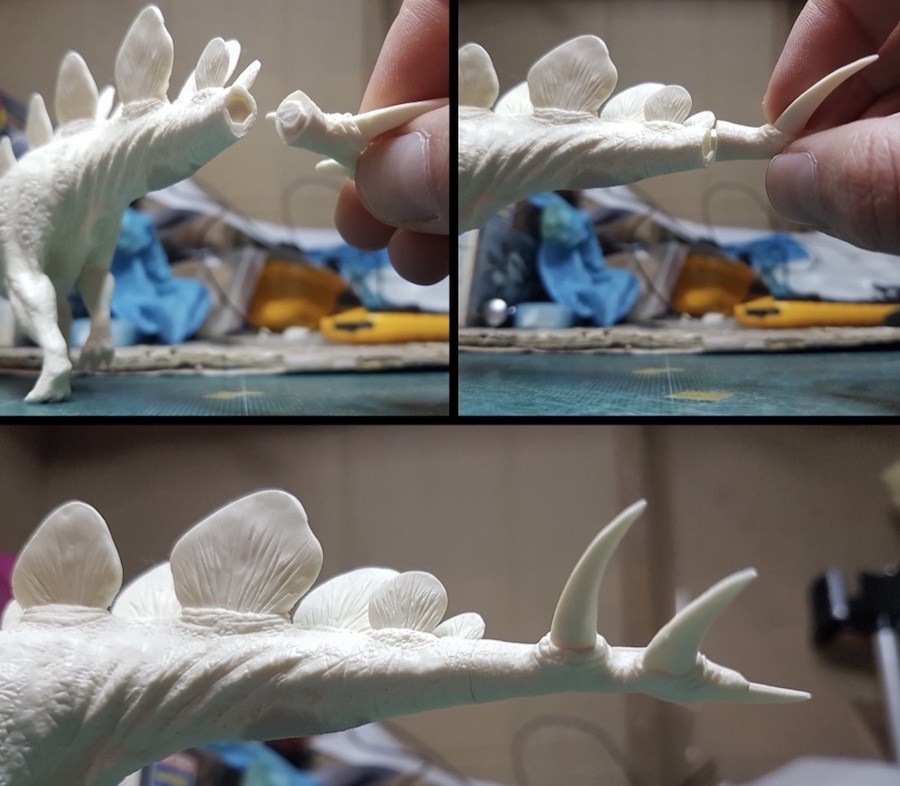
Supporting such small-scale and especially a one-person operation is not only meaningful but also support and encourage others who may want to venture on their own.Cesar’s talent surly will only improve through time, already you can see the difference between his earlier works and this one. I will surely be watching to see what else he tackles in the future, and who knows, perhaps add a few more to my collection. For now, this beautiful and delicate looking Hesperosaurus model takes her place among my most cherished models.
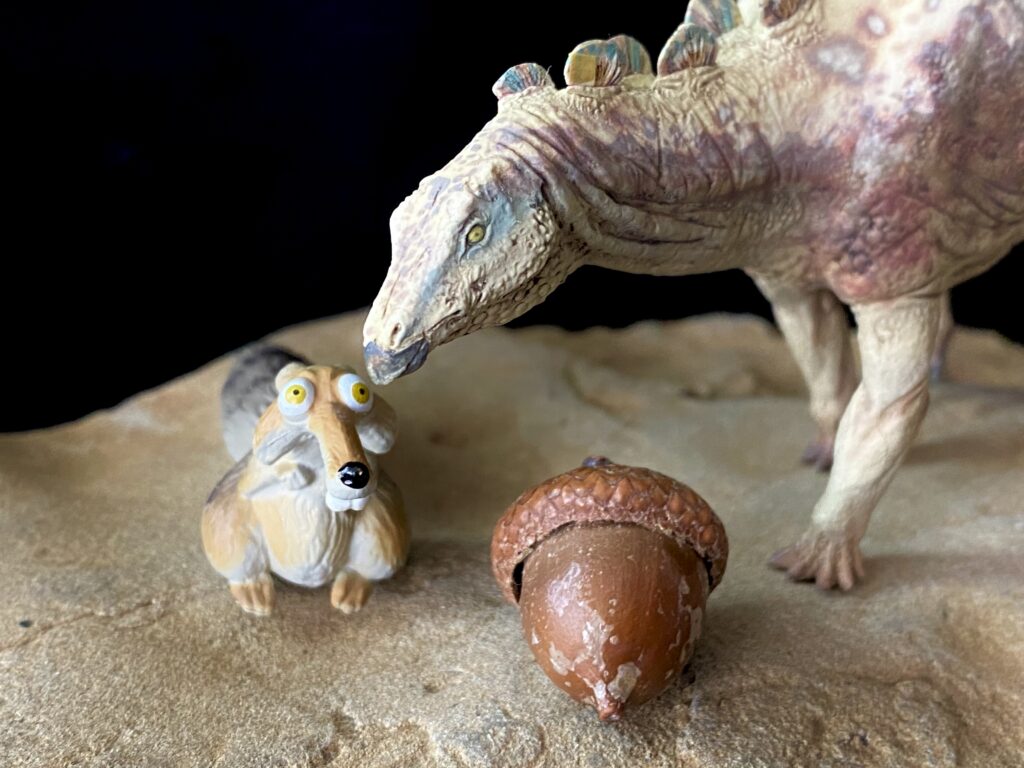
That concludes our review of this amazing piece of art, I hope you all enjoyed it. This review also marks my 91th for the blog, we are slowly creeping closer to a 100! Until the next review, stay safe and healthy! Cheers! Note: Due to the fragile nature of the material, I didn’t dare take the model out with me for some outdoor shots as much as I would have loved to. It was simply too risky.
Disclaimer: links to Ebay and Amazon on the DinoToyBlog are affiliate links, so we make a small commission if you use them. Thanks for supporting us!




Will you provide a link for obtaining this figure?
This is a beautiful figure. Thank you for sharing it with us!
What a gorgeous piece with its kaleidoscopic colours! The only thing that deters me from following suit is the prospect of damage in transit on its long journey.
The model is even more stunning in person with all the nuances you see with the colors.
But yeah, damage during transit is a real and big concern and one of the reasons I hesitated for a while. I’m the end I took a gamble and was lucky the damage was not severe.
If you ever saw his sauropod all painted up, I just can’t take that much risk with something that big and expensive!
The colour scheme chosen is absolutely gorgeous yet subtle enough to not stick out like a sore thumb in the wild
I love how that baggy neck is sculpted, it looks wonderful!!
Yes indeed, somehow all the colors worked well together and looks natural despite the initial reaction to the vibrant blue!
It is a very nice figure, the paint that you applied to your kit figure is great. It is a pity that it is made of resin and not PVC. Magnificent review like all the ones Boki has accustomed us to.
Thank you for always reading my reviews, that means a lot and very motivating.
Yeah, the resin material definitely is fragile!